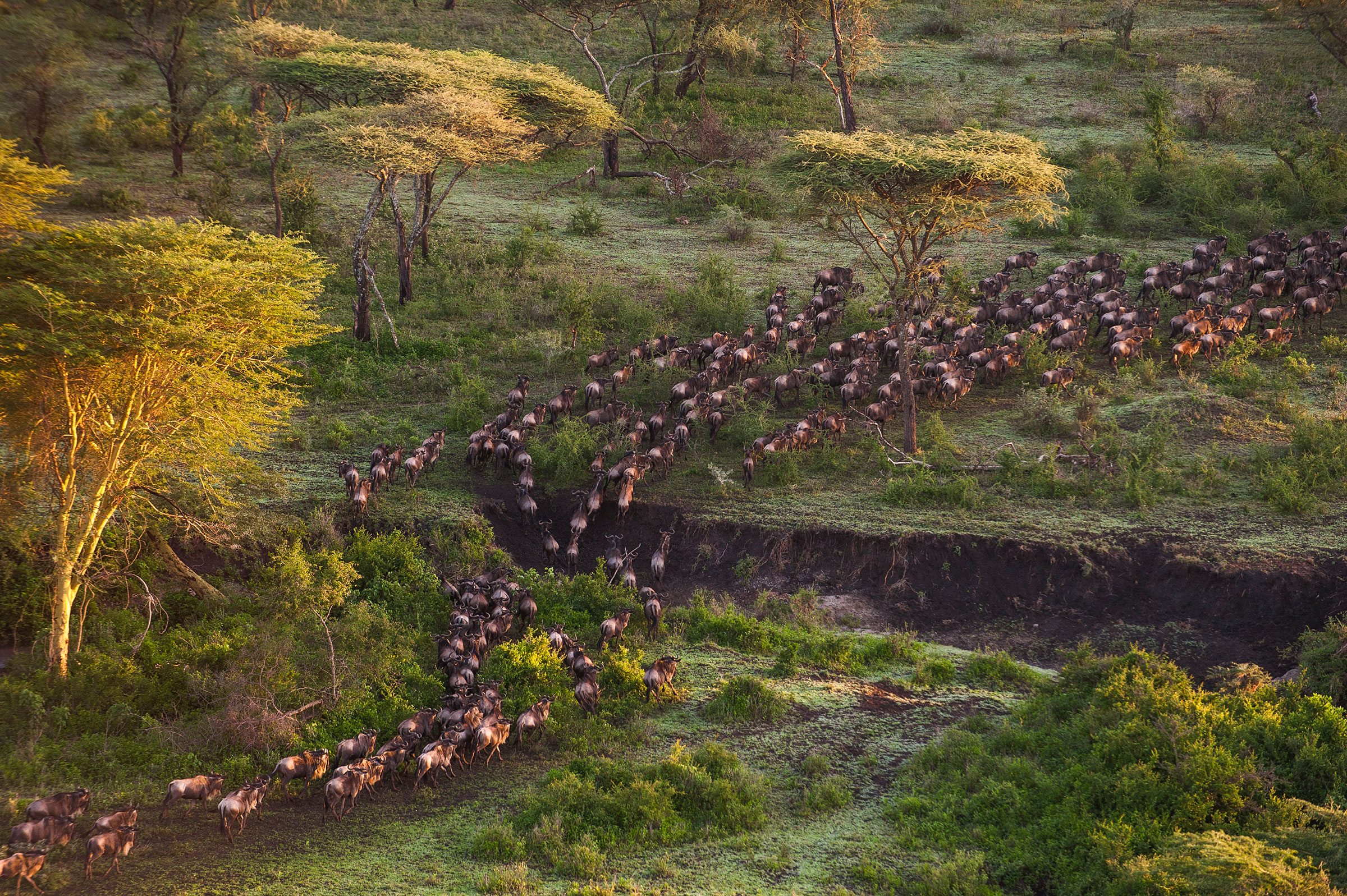A Shoulder Season Safari in Tanzania
Safari Without the Crowds
A Shoulder Season Safari in Tanzania
Each safari season has its pros and cons. Travel during the high season and you’re almost guaranteed fantastic wildlife sightings, but you’ll also battle crowds at those particularly great or unique sightings. During the low season in Tanzania, you’ll get some rains, but you’ll also have lush, green landscapes creating a stunning backdrop for wildlife photography. A shoulder season safari might get hot and you’ll have some rain, but you’ll be rewarded with lower prices and a private safari experience. There really is no bad time to travel to Tanzania. Wildlife can be found year-round. You just have to think about the type of experience you want and the value you are after.
A Safari in February
During February in the southern part of the Serengeti, you’ll find the area teeming with wildebeest calves. “Calving season” is definitely a spectacle worth traveling to Tanzania to see. Each year thousands of calves are born in the area, attracting large numbers of predators and a chance for some incredible game drives and sightings.

Birdwatching is also great between December and March, with February being the best time to see the Greater and Lesser flamingos around Lake Natron.
A Safari in March
The heavier rains tend to begin in March. While rain most days in March is typical, it likely doesn’t last all day. In the Ngorongoro Highlands, you’ll find that afternoon showers are short, leaving the mornings very pleasant for game drives. The rains make the landscape lush and green, but wildlife is a little more difficult to spot since they are concealed behind the brush. At Lake Manyara the birdlife is particularly good in March, with water birds heading the to wetlands and streams.
A Safari in April
The long, heavy rains continue into April bringing with it high humidity. Some lodges close down, but for those that stay open, you can expect to find some pretty good deals. So if you are looking to save some money and can handle the rain and humidity, April might be a really great time for you to travel. The water holes are full of both water and animals making the most of the water supply. Animals are harder to spot, but that might make for a more exciting game drive where all eyes are scanning the bush. The Ngorongoro Crater floor is covered in green grass and in the south and southeast portion of the Serengeti, you’ll find open plains making animal viewing great pretty much year-round. And all those baby wildebeest born in February are now old enough to start journeying north, so you should see some nice predator activity too.

A Shoulder Season Safari in Tanzania with Ker & Downey
Each safari season in Tanzania has something to offer. If you haven’t considered a shoulder season safari yet, we think you should. Our Travel Designers can help you decide just where and when you should travel to get the most out of your safari experience. Contact us today to start planning your next Ker & Downey safari.
